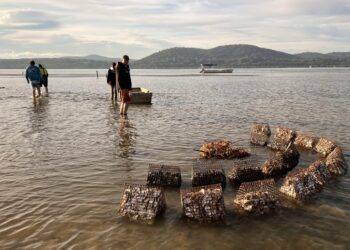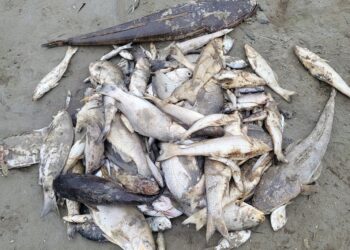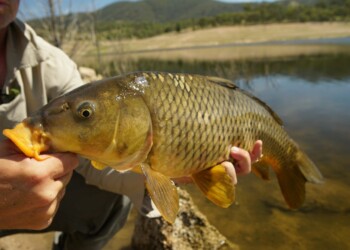
THE University of Western Australia and the University of British Colombia have released results of their “Sea Around Us” review, which looked at discard rates in commercial fisheries over the last decade. They estimate that about 10% of fish caught were thrown back, usually dead, equating to almost 10 million tonnes out of 100 million tonnes caught each year.
While that’s a decline from a peak of about 15% in 1989, when 19 million tonnes from a total catch of 130 million tonnes was discarded, it’s still a massive waste of the world’s wild fish resources. Fish get thrown back because they are too small, diseased or are of an unwanted species. The last is probably the worst reason. Fish go over the side because it’s too costly to retain and process them given their low market value, because the operator is already over quota for a particular species, because they’re only caught for their roe or because they can’t be marketed as they’re “protected” from being taken for sale in some way. Terrible reasons to throw away perfectly nutritional fish, as well as impacting already stretched stocks.
The study claims discard rates were now highest in the Pacific, rather than the Atlantic as they had been previously. Russian, Korean, Taiwanese and Chinese fishing fleets were identified as known Pacific “discarders”.
Australia thankfully does not appear to feature in this review of worst offenders and its fisheries managers pride themselves on developing strategies and plans to address discard issues. Back in 2005 there was a significant ripple when the UN’s Food and Agriculture Organisation’s third report on Discards of the world’s marine fisheries suggested that Australia’s commercial operators landed and marketed less than half of the marine life they actually caught, with an alarming 55.3% discard rate. Some local managers and fisheries researchers believed that this was an over-estimate and the FRDC funded a project to improve Australia’s discard data collection and reporting for national discards and bycatch. Traditionally this information came from observer programs and self-reported industry logbooks. The future is predicted to be in electronic monitoring and environmental risk assessments.
Better fishing techniques can help reduce discard rates, such as mandating larger net mesh sizes and excluder or escape devices. So, can decisions by operators not to target areas where they know there will be lots of “discard” species. If the decisions aren’t voluntary, then maybe they need to be legally “encouraged”.
In the end, fish killed should ideally be fish used, whether it’s for totally new product lines for human consumption or for fishmeal for aquaculture. Continuing with fishing practices that result in high discard rates should no longer be tolerated by fisheries regulators or fisheries political decision makers….and those of us that elect them and ultimately pay their wages.




















